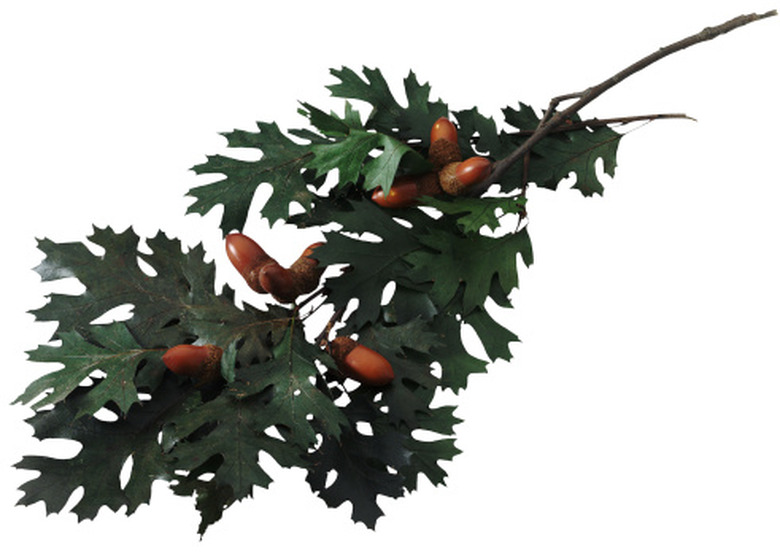How To Preserve Acorns
Collect acorns in the fall and if you want to wait until late winter or early spring to plant them, you'll have to preserve them properly in the meantime. Otherwise, they may dry out, rot or sprout too early.
Collect acorns in the fall and if you want to wait until late winter or early spring to plant them, you'll have to preserve them properly in the meantime. Otherwise, they may dry out, rot or sprout too early. To increase the likelihood of a successful planting, collect acorns from oak trees that are native to your area. Also, acorns found on the ground may contain insects, so lay a piece of plastic or a sheet on the ground and tap the tree with a long stick or pole. The acorns that drop onto the plastic or sheet are likely to be good ones for preserving.
Step 1
Remove any debris with the acorns, such as sticks and rocks, and take off the acorn caps by twisting them off. Discard acorns that have holes or cracks.
- Collect acorns in the fall and if you want to wait until late winter or early spring to plant them, you'll have to preserve them properly in the meantime.
- Remove any debris with the acorns, such as sticks and rocks, and take off the acorn caps by twisting them off.
Step 2
Fill a bucket with 1 gallon of lukewarm water and 1/2 cup of bleach. Place the acorns in the bleach water and stir. Discard the acorns that float and drain the rest in a colander. Lay them out on towels to air dry for a couple of hours. You do not need to soak the acorns for any specified amount of time. This step is simply to disinfect them quickly and see which ones float.
Step 3
Place the acorns in sealed plastic bags. Don't store more than 3 cups of acorns in any one bag. They will produce too much heat.
- Fill a bucket with 1 gallon of lukewarm water and 1/2 cup of bleach.
- Place the acorns in the bleach water and stir.
Step 4
Store the bags in the refrigerator until planting time. Check on the acorns periodically to check for mold. If there is mold, clean them again in bleach water, rinse, dry and place them back in storage. Note that acorns will only store for a few months, so plant them in the late winter or early in the spring.
Rid Of Acorns
Spread tarps on the ground around the tree trunk and below the tree canopy; use as many as needed to completely cover the drip line below the canopy. Rake the acorns into a large pile, using a broom rake that has thin, flexible tines. Scoop up the acorns with a flat shovel for disposal. Alternatively, attach a lawn sweeper a lawn tractor; large brushes pick up debris and toss it into a catch bag. The efficiency of this method varies greatly depending on the power of the vacuum and the size and weight of the acorns. Avoid leaf blowers that vacuum and mulch lawn debris.
- Store the bags in the refrigerator until planting time.
- Rake the acorns into a large pile, using a broom rake that has thin, flexible tines.
Things Needed
- Bucket
- Bleach
- Towel
- Plastic bag
References
- Phytosphere Research: Collecting, Storing and Planting Acorns; 1999
- Arbor Day Foundation: Oak
- WTOP: Why You Need to Get Rid of Acorns
- Arkansas Home and Garden: Trees — Oak
- Sacramento Tree Foundation: Gathering Acorns
- Sacramento Tree Foundation: Collecting Acorns
- YouTube: Picking Up Acorns with Baganut Nut Roller
- YouTube: Large Nut Wizard Tool (Black Walnuts, Apples, Sweet Gum Balls)
- KTRH News Radio Gardenline With Randy Lemmon: Oak Trees Going Nuts With Acorns
- Lowe's: Blower Buying Guide
